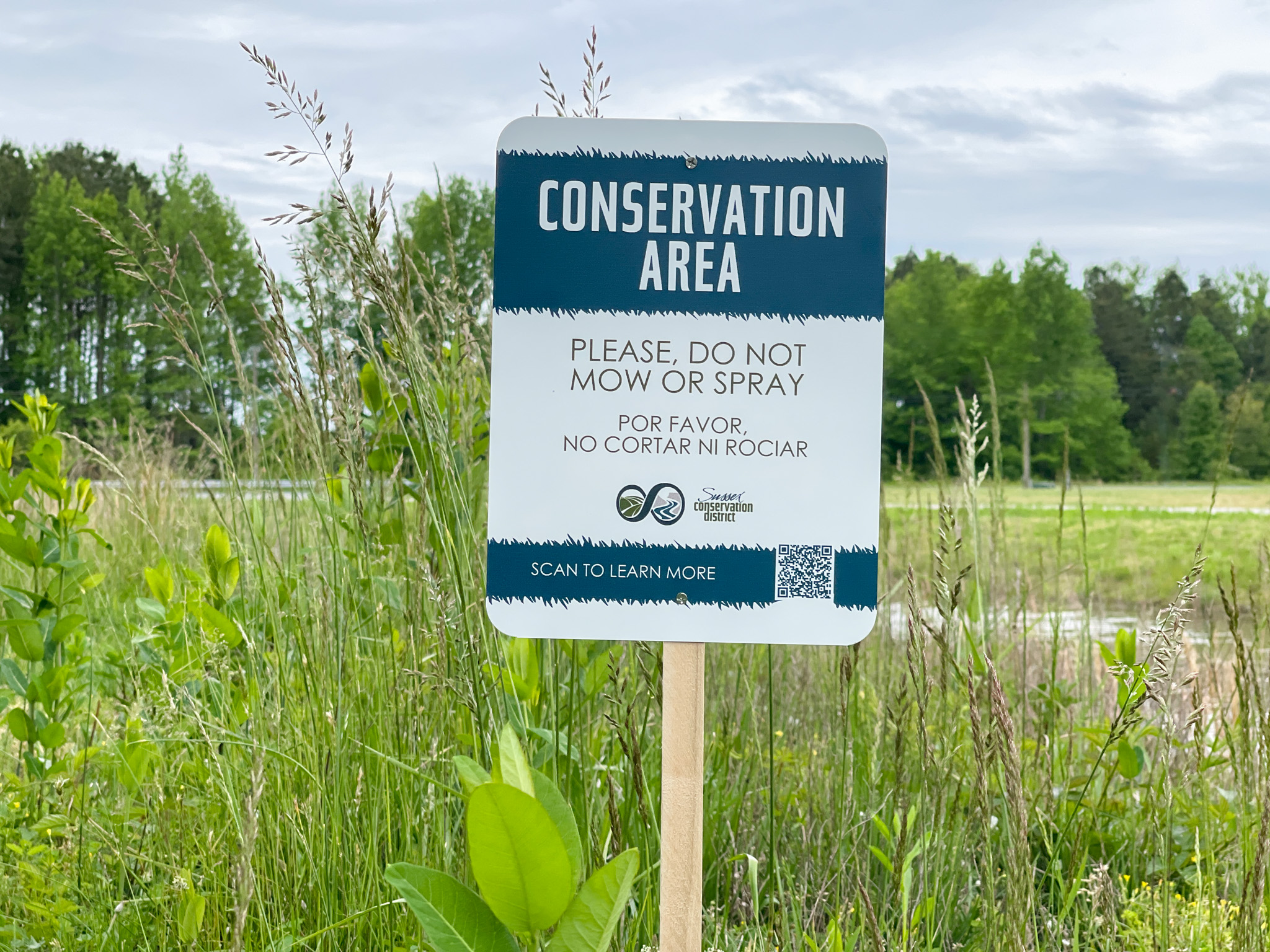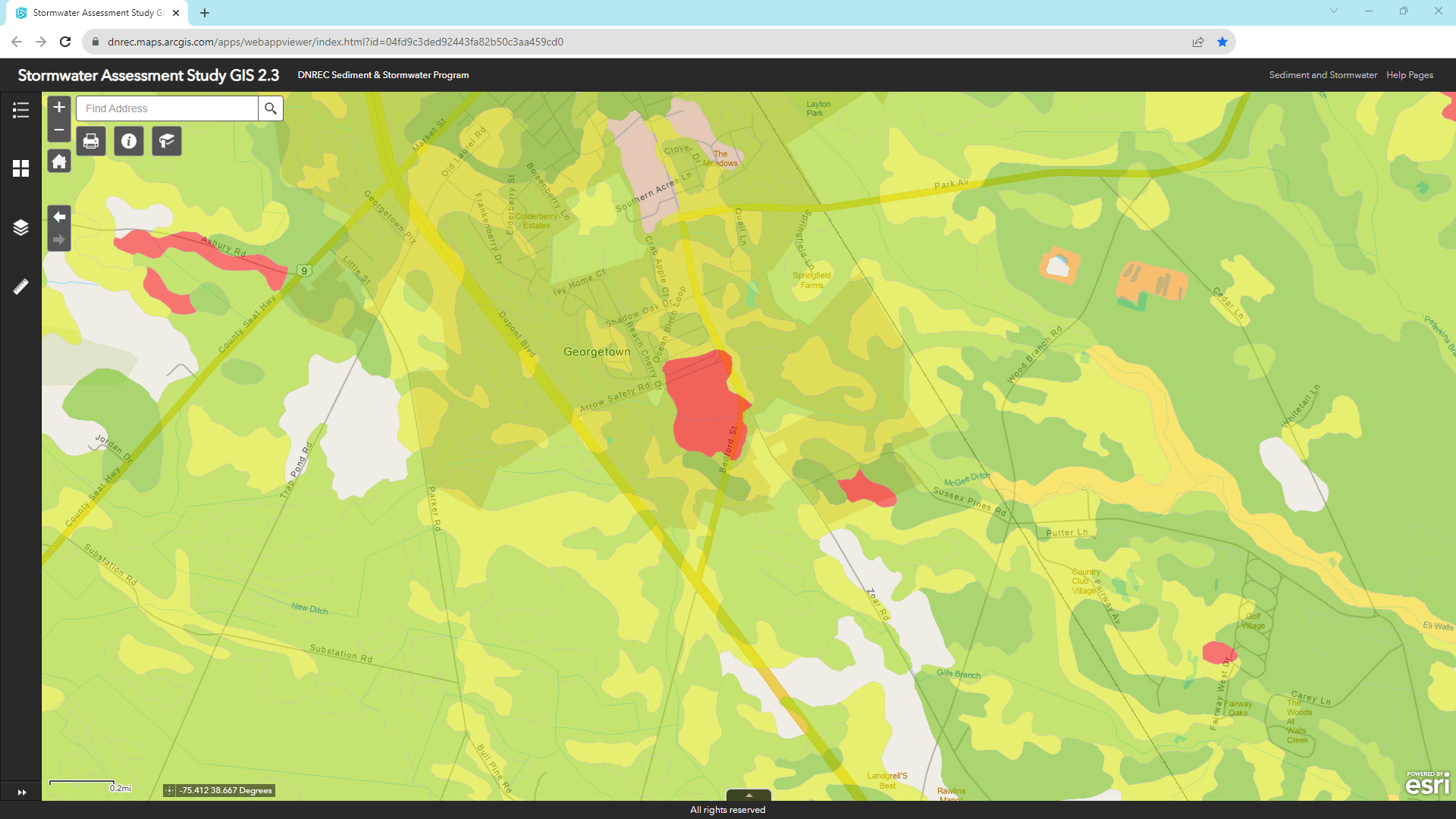This page is under construction, check back often for updates
 Protect your conservation area from mowing or spraying with signs. Conservation area signs can be purchased online, only $12.50.
Protect your conservation area from mowing or spraying with signs. Conservation area signs can be purchased online, only $12.50.
What is a conservation area?
A conservation area is land that is undeveloped and is maintained in its natural state such as forest, salt marsh, tidal mud flat, wetland, watersheds and water supply land.
In Sussex County, conservation areas, in an urban landscape, are a best management practice (BMP) that provides habitat for wildlife and water quality benefits by preventing nutrients and sediment from entering waterways. Converting turfgrass, or mowed open space, to a conservation area provides environmental and water quality benefits.
In urban areas, conservation areas can be:
-
-
-
- pond buffers
- vegetative buffer
- riparian buffers
- meadows
- native plant garden
- pollinator garden
- wildflower plantings
- rain garden
- vegetated swale
-
-
Learn more about the different types of conservation areas and the benefits they provide below:
Protect your conservation area with a sign!
SCDs conservation area signs help prevent unwanted mowing or spraying and the QR code helps educate others on the benefits of your conservation area. PURCHASE NOW - $12.50
conservation area Benefits
Reduce Nutrients - Reduce nutrient and sediment loading from surface runoff. Nutrient loading reductions can range from 20% to 100%. (See table below)
Increase Infiltration - Increase soil infiltration of stormwater runoff when using warm-season grasses. Turfgrass roots are short and do not absorb or filter water effectively leading to polluted stormwater runoff. Native plants have extremely long roots that can absorb and filter stormwater runoff.
Wildlife Habitat - Increase biodiversity by creating wildlife habitat and a food source for pollinators.
Lower Maintenance Costs - Reduce maintenance costs from not having to mow as frequently as turfgrass. Native plants are low maintenance which saves time and money because they require little to no lawn chemicals or irrigation compared to turfgrass or non-native plants.
Reduce Runoff and Erosion - Reduce soil erosion by reducing runoff velocities. A typical lawn absorbs 10% of the stormwater that a natural landscape can. Diverting downspouts to a native rain garden will reduce runoff quantity and slow velocity which prevents erosion.
Sequester Carbon - Meadows capture and sequester about 70% more carbon from the atmosphere than lawns.
Control Geese - Pond buffers provide a natural means of goose control around pond edges.
Estimated nutrient reductions
(Nutrient reductions calculated based on converting one acre of turfgrass to meadow conditions.)
| Total Suspended Solids |
Total Nitrogen |
Total Phosphorus |
|
| A-HSG | 17% | 16.2% | 50.2% |
| B-HSG | 22% | 21% | 65.2% |
| C-HSG | 22% | 21% | 65.2% |
| D-HSG | 21.2% | 20.4% | 63% |
| HSG - Hydrologic Soil Groups | |||
What's your soil type?
A-HSG - Well-drained, high infiltration and water transmission rate with low runoff potential.
B-HSG - Moderate infiltration and water transmission rate.
C-HSG - Slow infiltration and water transmission rate.
D-HSG - Very slow infiltration and water transmission rate with high runoff potential.
Dual Hydrologic Groups - Dual classification, A/D, B/D, C/D. The first letter represents conditions if drained, the second letter represents the original condition.
Find your Soil Type
- Visit: https://tinyurl.com/HSGSoilType
- Enter your address
- Toggle on Soil Layers (by county)
- Adjust layer transparency (three dots)
POND BUFFERS
Pond buffers serve a dual purpose by improving water quality and deterring geese. In Sussex County pond buffers are not required but are encouraged. Planting a pond edge with native vegetation, and species with long, strong roots, helps improve water quality by filtering nutrients and sediment while minimizing erosion along the pond edge.
Why does it look so untidy and unruly? Pond buffers can be planted with a variety of flowering native plants to provide beautiful color and interest throughout the year while providing food and shelter for wildlife to help birds and insects overwinter safely. These natural areas require less water, fertilizer and maintenance so they save property owners time and money.
